With freshwater plants craving both light and nourishment, the substrate choice becomes paramount. But before you rush to bury your greenery in the first soil you find, consider this comprehensive guide. From the humble grains of sand to the nutrient-rich aqua soils, each substrate type has its own tale to tell, affecting not only the flora but also the entire ecosystem of your tank.

To flourish, freshwater aquatic plants need a good source of light and an extensive palette of nutrients. For the latter, there must be some sort of planted tank substrate, and preferable a soil type (more on that below), that would best suffice as a source of food for your aquarium.
Not so fast.
Without a comprehensive guide, substrates and their relation to aquarium plants can get complicated for a beginner. To achieve a beautiful underwater aquascape you’ll need to consider more than one brand and its respective properties.
The best product for a planted aquarium should be a nutrient-rich substrate, but how will that affect other freshwater inhabitants?
Different materials, aside from sand or gravel, can affect water parameters. You need to take this into account if you’re planning to create a planted underwater garden. Adding an expensive yet sensitive species of shrimp to your freshwater tank may not be wise if you don’t have the right sediment.
Would a DIY approach be adequate then? What substrate will suit your live plants best while being safe for everyone else in the planted tank?
Choosing the RIGHT substrate for a Planted Aquarium: an A-to-Z Beginner Guide

To make the right choice you should be familiar with all the aspects of the different types of freshwater aquarium substrates. It may be a good idea to bookmark this page, as you’ll see that it’s not a tiny bit of information. Have a look at this beginner guide when choosing a substrate for your planted tank and consider the following:
1. Substrate Material
To comprehend aquarium substrates and how they affect freshwater plants you first need to know your material. There are tons of varieties out there, but generally, it all boils down to a couple of proven and well-understood ones. The substrates materials suitable for freshwater aquariums use are:
- Sand. – All in all, sand is fine grade rock minerals. It has no nutritional value for your plants but it has other advantages and stem aquatic plants like to grow in it.
- Gravel. – Same as sand in composition, but with much larger grains (anything above 2.0 mm). The size of the grains has different advantages and disadvantages in the aquarium. You’ll find more on that below in this guide.
- Baked Clay-based products. – These are products derived from baked clay. They won’t contain 100% clay.
- Regular soil. – This includes topsoil and potting soil. Topsoil is just dirt from your garden, which is basically a mixture of sand or gravel and compost or other organic materials. Potting soil can be made at home and is usually peat (partially decayed organic matter) combined with other additives such as sawdust and volcanic glass.
- Aquarium soil. – Aqua soils are baked, regular soils in the form of granules. They have the combined advantages of most other substrates, except perhaps the aesthetics. The grain size of aqua soil allows for super easy maintenance and the nutrients will feed your aquatic plants.
These are the 5 main types of substrates for a freshwater fish tank with or without plants, classified by the material.
Every material has additional benefits and drawbacks in regards to growing vegetation, discussed below.
2. Nutritional potential
Plants need a number of macro and micronutrients to thrive. To classify substrates relevant to their role in aquatic plant growth we can establish 2 main classes:
- Inert substrates – Inert substrates include gravel, sand, and baked clay products. These are the ones that do not provide nutritional value in a planted tank and are good for a “low-tech” system.
Why would anyone want anything of the like in their freshwater aquarium? Many reasons – visual appeal, pH and KH buffering, a weight that allows for easier planting and stable plant stems, controlling pore spacing, which contributes to better substrate oxygenation, water flow around plant’s root systems.
- Depleting substrates – Depleting substrates are the aquarium soils that have high nutritional value and thus directly promote vegetative growth in a planted aquarium.
Because these come with a limited amount of organic matter they will need to be replenished with time, as they will slowly decompose. These include commercial-grade aqua soils and regular soils.
Despite the advertising, some commercial substrates for planted tanks will include the nutritional elements in the form of bound molecules.
These will not be able to break down and reach your hungry plants’ roots.
Technically, this is not false advertising, but it’s not of use to your aquatic vegetation as well.
You can recognize these by their manufacturer’s promise to not break down with time (such as Seachem Flourite).
For this reason, to optimally grow whatever live plants, you’d still want to add a high-quality aquarium fertilizer in the form of liquid or root tabs when using inert substrates. This link will lead you to a comprehensive guide on those and pointers on how to choose the best one for your setup.
However, that’s only if you aim for professional-like growth. With a decent brand of depleting aquarium soil, you’ll still be able to achieve very impressive results.
3. Cation Exchange Capacity Value (CEC)
Some substrates used in planted fish tanks will have more Cation Exchange Capacity than others.
Cations are positively charged ions.
Aquatic plants employ these ions and turn them into energy and growth.
A higher CEC means that the substrate will be able to attract and hold valuable nutrients from the environment and readily provide them to aquatic plants.
Pretty much like a magnet. Think of it as an inherent characteristic of soils.
Generally, more CEC does not equal more readily available plant food, because you still need to “charge” the substrate with additional fertilizers.
That being said, aquarium soils and other substrates rich in organic matter have the highest CEC, and by degrading they charge themselves.
Clay-based substrates do not have high CEC (or at least nowhere near aqua soils) so if you want to take advantage of that you’d want to charge them by dosing additional fertilizers anyway.
Calcined Montmorillonite Clay, like Safe-T-Sorb, has the highest CEC from the inert baked-clay substrates, which is still 4 times less than peat or aqua soils.
The only advantage of high CEC would be that your aquarium would tolerate a more “loose” schedule when it comes to dosing fertilizers.
4. Substrate weight
The weight of your substrate of choice plays a role in the management of your planted tank.
Lighter substrates will obviously get stirred more easily by your livestock.
This, in turn, creates a rather constant unpleasant view and the particles could also clog or even damage the impeller of the aquarium’s filter.
However, what I find most annoying with lighter substrates is how difficult planting becomes.
Aquatic plants do like to float and if you’re dealing with tender carpeting species such as the Dwarf hair grass, for example, you’ll have a very hard time keeping it down on the bottom.
This creates the need for constant replanting and even surgeon precision won’t be of much help here.
Heavier substrates allow easy planting and therefore management of the aquarium’s bottom.
If you ever need to replant or rescape your tank (which eventually happens) you won’t be annoyed beyond belief when trying to anchor down your greens.
5. Size of the grains
Though fine aquarium sand may appear appealing as a bottom cover of the tank, it will actually impact the health of your plants’ roots.
Finer grain size results in compacting, which leads to less oxygen available for the root systems of aquatic plants.
It also hinders other gas exchanges between the water column and the substrate, which can result in harmful gases accumulating and killing your live plants.
These are called anaerobic pockets and are the result of trapped waste decomposing in an anaerobic environment (no oxygen).
A compacted substrate also applies pressure and can seriously damage plants with more fragile roots.
On the other hand, large grain size can prevent dwarf plants and their smaller roots from successfully spreading and you may also find it difficult to anchor down your tinier plants stably.
Another thing to consider with a coarse grade substrate is that it also creates “pockets” which can hide decomposing waste, which may overwhelm the biofilter and cause a spike in ammonia or nitrite levels in the water.
In combination with a good weight, they’re easier to vacuum, do not get stirred by fish easily, and hold down plants well, without compacting. To avoid anaerobic areas just use no more than 3 inches of the recommended size grains.
6. Porosity
A substrate that’s porous provides more surface area for beneficial bacteria to develop.
Aquariums that have substrates with good porosity can arguably hold larger colonies of nitrifying bacteria and therefore are able to handle more livestock if needed.
7. Possibly altering water parameters
Aquasoils that contain quality organic matter (such as peat) will decrease the pH of your water.
This should be taken into consideration when planning to look after a planted tank because it can affect fish or other livestock.
Swings in pH are stressful for aquarium inhabitants.
The acidity of the water increases on a logarithmic scale. This means that water with a pH of 5 is 10 times more acidic than water with a pH value of 6.
These aquarium soils will also strip your water from KH (carbonate hardness) indirectly.
In the context of fishkeeping, KH equals your aquarium water’s buffering strength.
The more KH it has, the better it will withstand changes in its acidity.
Buffering capacity is the power to stabilize.
High KH in water means that it will be difficult to increase or decrease the pH levels.
In laymen terms for water chemistry you should imagine KH like a sponge.
Whenever you add acid (lower the pH) your KH “absorbs” that acid for its most part.
However, the more acid you add the more the sponge gets “used up”.
Essentially at some point, your KH will fall down to 0 and then the pH will start to fall as well because your aquarium water will lose its buffering capacity.
At this point changing the acidity levels will be very easy, but it will also be more susceptible to swings.
Different aqua soils will aim to bring down the pH to different values, but all of them will generally target the 6.0 to 7.0 pH range because that’s where most aquatic plants feel comfortable.
In case I did not make that obvious – inert substrates will rarely if at all affect your fish tank’s water parameters.
But anyway, why that exact PH range?
Potent aquarium soils such as ADA Amazonia are designed to leach ammonium in the water.
That’s a good source of nitrogen for aquatic plants and they prefer it to nitrates for their N-uptake.
Mind that it’s not ammonia (NH3), but ammoniUM (NH4+).
In acidity levels under 7 pH, a large portion of ammonia turns into ammonium. Ammonium is harmless to fish, but still an outstanding food for aquatic plants, which is why decomposing substrates are designed to alter the water’s acidity in the aquarium.
Note that ammonium will show as ammonia on most test kits (such as the very popular API Freshwater Master Test Kit which you can find at both Chewy and Amazon), so don’t be baffled if it’s relatively high, but your fish seem to thrive. It’s all about the acidity.
Quick Tip: You can speed up the cycling of aqua soil by adding bottled aquarium bacteria such as Tetra SafeStart Plus to the water.
8. Visual appeal
Visual appeal is a major factor when it comes to aquarium substrates.
After all, the idea behind a planted tank is to make things as pretty as possible.
Some depleting substrates will have a better appearance than others, the same as with inert substrates.
Generally, inert substrates such as sand and gravel do look better in a planted tank setup.
Black Diamond Blasting Sand (BDBS) is black-ish and has a slight glitter to it.
It usually is a nice background for colorful freshwater fish and shrimp.
Pool sand has a mellow light-yellow color, that complements greens and red-ish rockwork.
Because of these advantages, fishkeepers often “cap” nutrient-rich substrates with an inert one (though that’s not the only reason behind capping).
Which leads me to my next section…
9. Possible setups and layer combinations
When planning for your planted tank setup you can go with a couple of different options. The possible substrate setups and layers for an aquarium with plants are:
- Inert substrate with fertilizer dosing. Since the inert substrate layer won’t provide any nutrients to aquarium plants you’d want to dose with either root tabs or liquid fertilizers in the water column. Inert substrates are beautiful, super easy to clean and manage, and don’t ever deplete or require changing. Ideally, you’d want your inert substrate to have good porosity, not too fine grains, and decent specific gravity to make anchoring plants in it easy. I mention some good candidates below. In my experience root tabs work best here if you’re not diligent enough to dose liquid fertilizers every other day.
- Commercial depleting substrate. Having a nutrient-rich substrate such as aqua soil will give you the most advantage for growing lush vegetation in the aquarium. These substrates will modify your pH and feed your aquatic plants really well. The downside here is that aqua soils are more expensive because they follow a special technology in their making. Baking organic matter into decently-sized granules with appropriate weight and having the right macro and micronutrients results in very easy management and fantastic plant growth. Another thing to consider here is that they will eventually deplete and will need a reload. The guy who introduced the Amano shrimp to the hobby, Takashi Amano, who is also legendary when it comes to planted tanks and aquascapes, used to advise that you reload your depleting aquarium soil at least once a year. He used to manage heavily planted tanks with difficult-to-grow species, so take that advice with a grain of salt. The replenishing period will greatly depend on the amount and needs of your particular plants, so for you, it will probably take even longer than that. If you want to have a heavily planted tank with various plant species, but don’t want excruciating substrate management then aqua soils are for you.
- Garden dirt or potting soil. This is the option that I would stay away from if I were new to planted tanks and substrates. Yes, garden or potting soils both have tremendous potential in growing aquatic plants, but the maintenance will be a real pain. They get stirred up easily and if you go this road you’re essentially sentencing your aquarium to has muddy water all the time. Some expert fishkeepers do aim for the “dirted tank” on purpose, but that’s not for everyone, because of the aforementioned reasons. Being nutrient-rich, garden dirt will deplete over time. It will also modify the acidity of your fish tank water. Avoid soils rich in compost and clay. Peat is your friend. Know that every soil will be different (especially topsoils) and if you want to achieve the same effect, you should supply yours from one and the same place.
- Garden soil capped with an inert substrate. This DIY substrate setup is a favorite to those who’d like to be frugal but are willing to keep up with the maintenance while producing marvelous plant growth. The cap resolves virtually all maintenance issues that come with using dirt. Capping with inert sand or gravel prevents the soil below from stirring and dirtying the water column. It also makes planting way easier. Replanting and uprooting can be a bit tricky though because there’s still a chance of creating a mess. Pruning or rescaping often requires uprooting and if you’re not super careful you may end up with swamp-like aquarium water. With a good canister filter in work, it should be fine in a couple of hours. The cap also gives the cosmetic advantage while it’s easier to vacuum. Use 2 parts of soil and 1 part cap. Be very careful not to mix the two layers as it will defeat the purpose. This do-it-yourself aquarium substrate can be really inexpensive, while extremely effective if done right.
- Commercial depleting substrate capped with an inert substrate. In my experience, this is one of the best possible substrate setups for a fish tank with plants. Commercial aqua soils have tons of advantages and give one of the best plant growth in the hobby, while completely eliminating the disadvantages of dirt (such as management). Combine that with a cap of a beautiful, porous inert substrate that holds plants well and emphasizes their color and you’ll get the most of your planted aquarium. Again, use 2 parts of aqua soil and 1 part inert substrate. Gravel caps have very specific properties that I will discuss further in my reviews below.
You finally have a decent understanding of how to use different substrates in your aquarium, and it’s time to ask yourself:
“Which setup suits my plants best?”
On to the last point of this guide.
10. The aquatic plants that you want to grow
If you’ve done your homework on planted tanks you already know that your choice of aquatic plants plays a major role in setting up the whole system.
Besides a decent substrate, to optimally grow these you also need decent lighting, with LED lights being the practice-proven top choice (visit the link to my help-guide on these if you’re still in the middle of your research). Choosing the right lights is the other half of the equation for explosive plant growth.
That being said, you should know a couple of things when considering a substrate for your aquatic plants:
- Plants with tender roots will have a difficult time spreading their rooting systems in coarser substrates. If you want to grow carpeting aquatic plants such as Dwarf Hairgrass, you’d probably want to have a 1.5 mm to 2 mm sandy cap. Carpet plants often use special roots called runners, which eventually form an intertwined underground system.
- Plants with strong deep-spreading rooting systems would need coarser substrates. For best results combine commercial aquarium soil or dirt, capped with pea gravel. The depth of the substrate should be appropriate with these (don’t go over 3.5 inches in total).
- Easier plants that don’t require much in terms of nutrients will do well in inert substrates if you dose fertilizers on the side. This is the recommended setup for inexperienced fishkeepers. Note that growing easy plants does not mean a lightly-planted tank. You can have lush green underwater foliage with an inert substrate as long as you pick your plants wisely. On that note, make sure the plants you choose actually need to be buried in the substrate. A good example here would be looking after Java Fern as it is a common choice among beginners. Java Fern does not need to be buried in the substrate because its roots need to suck nutrients directly from the water column.
- Medium-demanding plants will benefit from a commercial depleting substrate such as aquarium soil. If your plants require a little more nutrients your planted tank will do better with commercial soil designed for aquarium use. It can be done with inert substrates too, but you’d need to dose root tabs AND liquid fertilizers for optimal growth.
- Harder-to-grow plants will absolutely require aqua soil or garden dirt. In general, all plants will show fewer health issues and faster growth in soils, than in inert substrates. If you’re after difficult aquatic plants consider either pure or capped commercial aquarium soil. This is the recommended setup for hobbyists new to demanding plants. If you’re going down the garden dirt road, make sure the layer’s capped as well.
For some motivation, here’s a photo of a heavily planted tank from the Netherland Vivarium Aquascaping Competition:
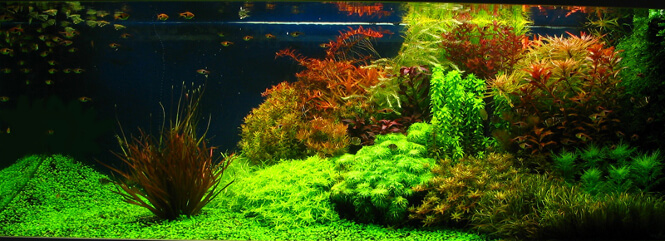
The 9 Best Planted Aquarium Substrates (Aqua Soil & Inert)
| Substrate name: | Key Nutrients for Plant Growth: |
|---|---|
| 1. ADA Aqua Soil AMAZONIA | Yes / Aqua soil |
| 2. CaribSea Eco-Complete Planted Aquarium | Is semi-inert; may alter kH but won’t provide plants with nutrients |
| 3. Black Diamond Blasting Sand | No / Completely inert |
| 4. Mr.Aqua Planting Substrate | Yes / Aqua soil |
| 5. Fluval Plant and Shrimp Stratum | Yes / Aqua soil |
| 6. Dennerle Scaper’s soil | Yes / Aqua soil |
| 7. Safe-T-Sorb | No / semi-inert, will alter kH and pH but won’t give off nutrients for plants |
| 8. Seachem Flourite | No / Completely inert |
| 9. LANDEN | Yes / Aqua soil |
The best aquarium substrate should include key nutrients to feed your live plants and it should be easy to manage. It should also remain chemically stable and it should provide a reasonable bed for growing beneficial bacteria.
I’m only listing products that stand out by strongly fulfilling one or more of these criteria.
Take a peak at the best substrates for a thriving planted tank:
Click here to see the current price + more photos on Amazon.
What I’m about to say here is my opinion, though it’s generally agreed upon by many other aquarists.
The ADA Aqua Soil Amazonia products are likely the best commercial substrates for a planted tank on the market.
The aqua soil contains important macro and micronutrients and feeds your freshwater plants over long periods of time.
This brand of substrate arguably shows the best foliage growth in a planted tank setup.
It’s very ammonia-rich and it releases huge amounts of Nitrogen during the first couple of weeks.
Ammonium is not toxic to fish or shrimp.
However, your water acidity plays a major role in that process.
If your tank’s water leans on the alkaline side (reads more than 7 pH) then most of the non-toxic ammonium transforms into toxic ammonia.
If your pH is below 7 the ammonium stays as it is and won’t harm aquatic inhabitants.
This is the main reason why these substrates aim to lower your tank’s pH levels.
This way they provide the most value for your plants while being safe to fish and shrimp.
For this reason, If your water is neutral or alkaline (7+ pH) it’s recommended that you introduce the Amazonia products to the aquarium before adding fish and shrimp and let the nitrogen cycle do its work for 3 to 4 weeks. After the tank has completely cycled the substrate will still leach ammonium, but your pH will be lower and it won’t cause issues with livestock. Aquatic plants prefer to get their nitrogen from ammonium (NH4+) rather than nitrates (NO3).
This makes the ADA Aqua Soil a very competitive product and a preferred choice by many planted tank enthusiasts, be it experts or beginners.
If you cap it with a layer of an inert substrate the residual ammonium won’t ever get to your water column and it will be better handled by the good bacteria and the roots of your plants.
The grain size of this aquarium soil is just about perfect to let water flow and also has a decent weight that will allow easy planting.
It’s ideal for aquatic plants with large and small roots.
ADA Aqua Soil has outstanding porosity that allows for tons of bio-filtering bacteria to be grown.
Because of its degrading organic components, it will deplete over a period of 12 to 24 months.
The period depends on how dense and demanding the plants in your aquarium are.
After that, you’d need to add more which also means dealing with another ammonia spike and waiting for cycling.
When its nutritional value melts away you can also start adding root tabs or liquid fertilizer instead of replenishing. That’s easier to do and according to your taste.
This commercial substrate will lower the pH and get rid of the KH in your aquarium water.
This is not a bad thing because slightly acidic water is usually preferred by many tropical fish and plants.
Before deciding on this product do research on the fish you plan to house in your planted aquarium and what acidity they thrive in.
Make sure their preferred pH levels align with these of the ADA aqua soils.
The ADA Amazonia substrate will generally lower your pH to about 6.8 or so (after settling, which can take up to a month).
There are 5 ADA Aquasoil substrates available to aquarists. Here’s a general summary of each and their key differences:
- ADA Aqua Soil Amazonia – Has the MOST significant impact on plants. Leaches the most ammonium at first. You should let it cycle before adding fish or shrimp if current pH levels read above 7. Has a dark (unpleasant in my opinion) brown color and it will cloud your water upon introduction. Can initially induce algae, because of its high nutritional value, but with time it will balance itself out. I recommend this one if you want to get the most of your plants. Will increase the acidity to about 6.8 pH.
- ADA Aqua Soil Amazonia ver. 2 – Leaches a little less ammonium than Amazonia. Will grow your plants almost as much. Will likely need cycling, depending on current pH levels. It won’t make the aquarium water cloudy when being added or rescaped. Is more starter-friendly, hence my recommendation. Will increase the water acidity to about 6.2 pH.
- ADA Aqua Soil Amazonia LIGHT – Has roughly 4 times less ammonium content than Amazonia. Will release roughly 5 times more Nitrates. Has roughly 50% less phosphate than Amazonia. Will increase the acidity to about 6.7 pH. This one will produce less growth than Amazonia, but it will also keep algae under control in the initial stage. Good for heavily planted tanks with low-to-medium demanding plants.
- ADA Aqua Soil Africana – Leaches no ammonium. Has little to no nutritional value for your plants (only provides a little Nitrates). Has harder granules. Has a red-ish coloration. Will significantly increase the acidity of water to about 5.9 pH.
- ADA Aqua Soil Malaya – Has no nutritional value to your plants and leaches no ammonium. Has soft granules and a lighter yellowish color. Will impact the acidity in your tank the most bringing it down to 5.5 or in some cases even lower.
Okay, after reading the differences you should be sure in your pick.
If your planted tank is going to revolve around lush green growth that includes carpeting plants I recommend going for the Amazonia.
The only cons that I would like to mention are (as you’ve probably noticed) the pricing and the time it takes for initial tank cycling.
ADA Aqua Soil is an overall fantastic product and probably the best aquarium substrate on the market, so I give it a 9.5 out of 10.
Advantages:- Good specific gravity (holds plants well)
- Has key nutrients (for Amazonia types)
- Will grow even difficult plants (for Amazonia types)
- A constant supply of nitrogen through NH4+ (for Amazonia types)
- Good porosity (holds more beneficial bacteria)
- Lowers pH
- Easy management
- Bottom-dweller safe
- Costly (though that’s an investment that will last for over a year)
- Needs replenishing after 12 to 18 months (depends on your plants)
- May need to be cycled, because of the initial nitrogen release
2. CaribSea Eco-Complete Planted – The Common choice
Click to compare pricing + see MORE photos of this product at:
This aquarium substrate can be controversial.
CaribSea’s Eco-Complete is (in my experience) rather inert.
They do not lie on the back of the cover, the substrate has the chemicals in it, but not in molecules that would render them available for plant food.
I can cite Tom Barr (a famous guru with significant expertise in planted aquariums) on this matter:

The glass example is on point.
Therefore, I’d classify Eco-Complete as an inert substrate.
Though dosing the water column with liquid fertilizers is usually beneficial for plants, with Eco-Complete it’s a must.
Root tabs can also make a difference.
Anyway, the CEC value of this substrate is mediocre as well.
However, what I like about Eco-Complete are its porosity and attractive texture.
It provides a huge bed for beneficial bacteria and it looks really good under plants.
Speaking of which, it comes in bags of water, because it’s pre-cycled.
It’s still a good idea to wait it out a bit, because the bacterial colonies may need to grow to support the current levels of ammonia and nitrite that will be produced in your new planted tank.
This inert substrate does not require rinsing, and it does not make a mess in the tank. All of this makes it a super easy aquarium substrate to maintain.
Eco-Complete leans on the lighter side, which means that if you plan on having tender plants it may be difficult to anchor them down from the first time.
Still, roots develop easily and have no issue establishing themselves.
Anyway, Eco-Complete is safe for bottom-dwelling fish.
This substrate MAY rise your carbonate hardness (KH) which in turn may increase pH. So be careful if you plan on keeping freshwater shrimp.
The product may also increase the general hardness (GH), so take that into consideration as well.
The manufacturers claim that they fixed the issue, but there are some reports of it happening from time to time.
This is another reason to test it on a fishless tank at first and wait for the water parameters to stabilize.
A con I would like to mention is the price.
It’s a bit overpriced given its impact on plant growth.
I’d recommend this substrate if you’re after easy aquarium plants.
As long as you pick your aquatic plants right you can have a good-looking underwater jungle with no issues.
Advantages:- High porosity
- Good texture
- Moss attaches well, because of the porous surface
- Suitable for easy plants
- Comes pre-cycled
- Safe for bottom-dwellers
- Does not require rinsing
- EASY TO MANAGE (having no mess is a dealbreaker for some)
- Nutrients won’t be enough on their own (needs additional fertilizers)
- Lightweight (more difficult to plant small plants in it)
- A bit overpriced
- May or may not rise pH and KH
3. Black Diamond Blasting Sand – Novice-Friendly
Click here to see the current price + more photos on Amazon.
I wrote a whole separate article on Black Diamond Blasting Sand.
You can check it out by clicking the link, but I’ll summarize what’s important when it comes to freshwater planted tanks.
This black sand looks gorgeous, its grains are the right size, has a PERFECT specific gravity, and is inert.
It will complement the colors of your freshwater plants, fish, and shrimp unless they have a darker coloration.
You can choose from either the finer or the medium-grade grit.
With the finer one (20/40) your plants will have an easy time staying on the bottom and spreading roots.
With the coarser, medium one (30/60) it would be easier to vacuum and it won’t get stirred as easily by livestock.
This sand substrate is heavy and will not cloud the aquarium water for a long time.
Another thing here is the cost.
You can find Black Diamond Blasting Sand locally at Tractor Supply Co and it will cost you 5 times less than if you buy it from a normal supermarket.
You can also get its alternative – Black Beauty Sand, which is very similar in composition.
Both will come at a a very low price for a 50 lbs. bag if you’re getting them from Tractor Supply Co and not Amazon.
Cheap in price, but not cheap quality for a decent-looking planted tank.
The Black Diamond Blasting Sand substrate is perfect for plants with delicate roots.
Its weight and size are as if they were made for aquascaping.
This type of sandy substrate won’t ever need replenishing and it’s inert.
Just dose with root tabs or liquid fertilizers and your plants will be fine.
My experience has been that with the right light you can even grow carpeting plants on it.
Some people say that the sand is too sharp for bottom-dwellers and it may hurt their bellies.
My experience shows otherwise.
I’m looking after some very happy rubber lipped pleco fish that live in my BDBS tanks. The plecos were there ever since they were little and I never had an issue with them.
Blasting media sand needs to be hard, and NOT sharp to work.
BD blasting sand is an overall great substrate for the aquarium – it’s easy to manage and it looks good.
This is one of the best inert substrates for a planted aquarium, in my opinion.
It’s by far the most economical one, and when combined with root tabs and a little water column dosing your aquatic plants will grow absolutely fine.
Advantages:- Very easy to plant in
- Attractive appearance
- Is heavier and will not cloud the aquarium’s water
- Cost-efficient
- Plants with tender roots have an easy time spreading
- Will not compact
- Easy management
- Perfect for the DIY cap approach
- Sometimes difficult to find it locally (can be found in Tractor Supply Co)
- Is inert (additional fertilizers should be provided)
- May need rinsing before adding it to your freshwater tank
4. Mr Aqua Planted Substrate – Long-lasting Growth
Click here to see the current price + more photos on Amazon.
Mr. Aqua’s aquarium soil is another quality substrate that will deplete over time.
From my experience, you can achieve explosive plant growth with this aquarium plant soil.
Same as ADA Amazonia, it will feed your plants nitrogen through the release of ammonium.
I couldn’t find exact data on how much it would leach, compared to Amazonia, but some hobbyists claim that it’s not as much as ADA’s products.
However, I find Mr. Aqua to be extremely nutritious and in some setups outperforming Amazonia (emphasis on “some”).
This substrate will bring down the water’s pH to around 6.5, making it ideal for a freshwater planted tank with shrimp.
The granules keep their look whole for a long time.
This substrate is roughly the same price as other premium quality aqua soils, but make sure you get the 8L bag because the 1L ones are super overpriced.
Also, do your research on how many bags would you need for your tank.
The Mr. Aqua aquarium substrate has lower specific gravity, which causes it to be more easily stirred by fish and shrimp.
It will cloud your water at first and when re-scaping, but with a decently powerful filter it should be fine in a couple of hours.
I recommend capping it with an inert substrate of your choice.
This will solve both the lightweight issue (easing your planting efforts) and the muddy water issue.
Some will say that this substrate has a mediocre look to it, nothing too special. I kind of like it.
It’s an overall great product and if you can find a deal on it – you should buy it, as it will grow even difficult species such as most red aquatic plants.
I give this substrate a 9 out of 10.
Advantages:- Can grow difficult plants
- Has key nutrients
- Will decrease pH
- A constant supply of Nitrogen
- Grain texture lasts longer relatively to competitors’ depleting substrates
- Is lightweight (I recommend capping it with a heavier substrate)
- Will cloud the water upon introduction or re-scaping (another reason to be capped, unless you have a good canister filter)
- You should probably cap it with another substrate
- May need cycling (depending on your current pH)
- Depletes over time (12 to 24 months)
- Greater initial cost (though it’s worth it)
5. Fluval Plant and Shrimp Stratum – For beginner plants
Click to compare pricing + see MORE photos of this product at:
The Fluval Plant and Shrimp Stratum has key nutrients but won’t leach huge amounts of NH4+ like some other more expensive substrates for freshwater planted tanks.
Aquatic plants grow well in it, though if you’re after some more demanding plants fertilizer dosing would be a must.
It will still buffer down the pH of the water to slightly beneath 6.8, for me it was always around 6.5 or so.
Of course, shrimp do well in it, for as long as the pH remains low.
This aquarium soil is safe for bottom dwellers and fish that like to burrow themselves in the substrate, such as freshwater eels.
The size of the grains in combination with its specific gravity makes it a little difficult to plant smaller plants.
With carpeting aquarium plants, you may have a really annoying experience if you don’t cap with another substrate with a decent weight.
The grains are also a little more brittle than with other substrates, so be gentle.
It will initially cloud your water, rinsed, or not. So don’t be shocked at the dust storm.
With a filter in place, the cloudiness will sort itself out.
I recommend this substrate if you’re planning to have a planted shrimp tank, that employs low-demand freshwater plants with big and robust roots.
The pH buffering starts to fade off after around 6 months, but you can extend that period if you use Indian Almond leaves or other natural acidity buffers.
Advantages:- Will grow low to medium difficulty plants on its own
- Will decrease water pH
- Safe for bottom-dwellers
- Really lightweight (don’t buy if you re-scape often)
- Cost
- Can create a mess (unless capped)
- Depletes after 6 to 8 months (almost twice as fast as other aqua soils)
- Is a little too brittle
Click here to see the current price + more photos on Amazon.
Dennerle Scaper’s soil offers everything an aquarium soil should, except it has ammonium leaching down to a minimum.
Don’t get me wrong, you will likely get a spike, but it won’t be as dramatic as with ADA Amazonia, for example.
Other than that this substrate holds up well and arguably longer than any other aquarium plant soil.
It has the key nutrients and your aquatic plants will absolutely flourish in it.
Dennerle’s Scraper Soil lowers the pH of the water as well.
Letting this aqua soil cycle is recommended before adding any fish or shrimp.
This aqua soil is rather clean (or at least cleaner than most) and management is not difficult.
When re-scaping you’ll find that it may dust the water (though not mudding it) for a short period, so, perhaps, a cap should be used.
The specific gravity of the grains is awesome for planting.
In fact, I think planting is the easiest in this soil compared to any other depleting substrate.
It’s not the cheapest, however, but the results are pretty great and for the plant growth you’ll get, my personal opinion is that the price is justified.
Use this aquarium substrate if you’re willing to spend a little more, but don’t have the nerves to deal with lengthy ammonia spikes and muddy water.
I rate Scaper’s soil at 9.5 out of 10.
Advantages:- Will grow demanding plants
- Planting in it is a breeze
- Won’t mud your water upon re-scaping (though it will dust it)
- Buffers pH to below 7
- Ideal for planted shrimp tanks
- Texture holds longer than your usual aqua soil
- Natural look
- Cost
- Gives off less Nitrogen, but still needs cycling
7. Safe-T-Sorb – Cheaper Alternative
Click here to see the current price + more photos on Amazon.
Safe-T Absorbent also famous as Safe-T Sorb is a very good option as an inert substrate for freshwater live plants.
I did not list other baked-clay products here (Turface MVP, Oil-Dri, etc.) because in my experience they were not worth mentioning compared to Safe-T Sorb.
What I like about this product is that you can find it for super cheap, it has a beautiful appearance (if you’re into light-colored substrates) and it doesn’t create nearly as much mess as the others.
If you’ve clicked the Amazon link above you’d see that its price is not something outstanding compared to the others, so why would I list it as a cheap option then?
Well, same as Black Diamond Blasting Sand (reviewed above) it can be found at your local Tractor Supply Co for a pretty decent price per 20 lbs. bag.
It has the highest CEC value from the other baked clay substrates, which means you can “charge” it with nutrients and not be as diligent with fertilizer dosing.
Note that its CEC is less than a quarter that of aqua soil.
Still, because of its relatively decent CEC, it will strip your water from kH, which in effect will also lower the pH.
This effect is not constant and it stabilizes itself out in a month or so.
Anyway, Safe-T-Sorb is super clean and easy to manage and it allows for re-scaping plants and aquarium decor to become a pleasure.
Planting very tender plants can be tricky sometimes tough, as the specific gravity is not that convenient for holding them down easily.
Rinse a lot before introducing this substrate to your tank. If you don’t it will create a mess and you won’t be able to enjoy the view of your plants.
I would recommend using this product in your aquarium, if you want an inexpensive quality inert substrate, that’s not black (BDBS), you’re willing to dose fertilizers and you’re after growing plants with larger roots.
Advantages:- Absorbs carbonates and lowers pH and water hardness
- Doesn’t create a mess
- Cost
- Texture and color (if you’re not into darker aquarium beds)
- Higher CEC (means you can dose fertilizers on a loose schedule)
- RINSE IT
- Additional fertilizers are a must
- Availability (You need to get it from Tractor Supply Co, locally)
- Doesn’t hold small plants and carpets well
8. Seachem Flourite – Aesthetic options
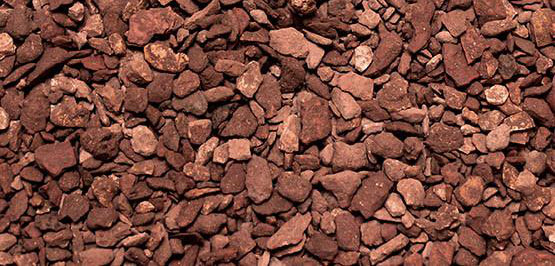
Click here to see the current price + more photos on Amazon.
Seachem’s Flourite series are various inert aquarium substrates.
Some will have finer particles and some not so much.
They all have a very appealing look and complement freshwater planted tanks well.
There’s a myth circulating the Internet that Flourite has a high CEC value.
I’ve found this to be untrue. Speaking of which it will not alter any of the water parameters.
It’s very chemically stable and it does not lose its texture ever.
It can be perceived as lightweight for some hobbyists’ taste and you may find some of your smaller plants pop up and float after planting.
There are two cons that I would like to discuss here.
This substrate is a real mess if not thoroughly rinsed.
I’m talking 6 to 8 times rinsed.
It can cloud your planted tank’s water for weeks, defeating the purpose of enjoying a nice forest-like aquascape.
So rinse this inert aquarium substrate very well.
Another thing to consider about Seachem’s Flourite is cost.
If you’re not using it in a small aquarium with plants you’ll find yourself paying a fortune for a substrate that has no real impact on plants.
You should dose water column fertilizers AND root tabs if you’re after the Flourite look.
I recommend this substrate only if you like its appearance, and are prepared to rinse well, stay on top of the fertilizing schedule and do not plan to employ small carpeting plants in your aquarium.
Advantages:- Keeps its texture virtually forever
- Good aesthetics
- Lots of texture and color options to choose from
- Can cloud the water if not rinsed very well beforehand
- Cost
- Inert (your plants will need additional fertilization)
- Don’t use if you plan on having carpeting plants
9. LANDEN Aqua Soil – Will Not Disappoint
Click here to see the current price + more photos on Amazon.
I decided to include the LANDEN aqua soil in this list because I tried it recently and liked it.
I obviously gave it a couple of months to fully test its potential so that my review of it is complete.
LANDEN is a good alternative to ADA Amazonia’s aqua soil because it leaches less ammonia initially.
Don’t get me wrong, you’ll absolutely see a spike but it won’t be a bomb like it is with ADA Amazonia.
Comparing the two further, I’d have to say that, in my experience, LANDEN seems like it lasts longer.
It does not break down as much when I rearrange stuff in my planted tank and it seems more stable in general.
The plant growth was there too but I’d say that Amazonia grows my aquatic plants a little bit faster.
So this is the trade-off for having to deal with less ammonia in my tanks with LANDEN.
From the perspective of a beginner, LANDEN is easier to manage than ADA which can be a huge advantage if it’s your first time trying out aqua soils.
Speaking of management, LANDEN is on the lighter side and you can’t expect it to perfectly hold down plants like Black Diamond Blasting Sand would.
Still, planting in the LANDEN aqua soil is not frustrating as is with some other light soils.
The weight of the granules and their firmness in general, allows for easier time when vacuuming the substrate of my planted tank.
The CEC of this aqua soil is not as good from what I’ve seen but it does the job.
Before getting it I read that it likes to gobble up quite a bit of Phosphate (PO4) and that has been my experience as well.
The soil lowered my pH to slightly below 6.5, something like 6.3 or so and has kept it there.
My tank had like 2 kH and LANDEN did negate that pretty easily.
So if you’re to use this aqua soil, you’d want to have some kH in your planted tank.
All in all, the LANDEN aqua soil is a great choice and it seems like it’s becoming more and more popular among beginners. I recommend!
Advantages:- One of the easiest aqua soils to manage
- Grows aquatic plants very well
- Lasts more than your usual aqua soil since it breaks down slower
- Leaches less ammonia initially
- Good buffering capacity, lowers pH and gobbles up kH in the process
- Needs to be cycled
- A bit on the pricey side but nothing spectacular
- Eats up a lot of Phosphates initially
How much substrate do your plants need: depth & bag weight?
Here’s how deep the substrate for your planted tank should be:
For a planted tank you’d generally want no more than 2 inches of a nutrient-rich depleting substrate or 3 inches of “capped” substrate where 1 inch is your inert cap and the underlying 2 are for the depleting one.
That being said, here’s how to calculate how much substrate would you need to buy for your plants:
The basic formula for calculating aquarium substrates is
(Tank Width cm × Tank Length cm × Substrate Depth cm) ÷ 1000.
This equation will give you the substrate needed in liters.
All of this is not an exact science, because different substrates have different densities and a liter is a measurement of volume.
Not every bag that you’ll find lists its contents in liters though. Most gravel bags, for example, come listed in pounds.
I have a whole article explaining how to calculate how much gravel you need to get in pounds for your new aquarium.
Make sure to check it out.
Also, what I like to do when in doubt is use some sort of basic substrate calculator, which takes into account the specific density of the sediments. You can find many of these calculators with a quick online search.
Check the dimensions of your aquarium by clicking here and fill in the empty fields to calculate how many bags of substrate would you need to purchase.
FAQs
What is the best one for a planted aquarium?
The best substrates for optimal plant growth in the aquarium are known as aquarium soils.
Aquarium soils lower the pH of the water and release nutrients like ammonium and phosphorus in it, basically creating the ideal conditions for aquatic plants.
Nothing beats aquasoils in terms of plant growth in a planted aquarium.
What is the best one for beginners with a planted aquarium?
The best substrate for a beginner with a planted aquarium is the one that doesn’t alter the water’s parameters. So instead of aquarium soils, a beginner should likely get something like sand, and supplement it with root tabs.
The sand looks good in a planted aquarium and is easy to manage, and the root tabs help with feeding the plants nutrients and require almost no maintenance.
What is the best one for a planted tank with bottom dwellers like Corydoras and Plecos?
There are two concerns with bottom-dwelling fish like Corydoras and plecos in a planted tank. One is that the fish could stir the substrate and make the water cloudy. On the other hand the wrong substrate could hurt the bellies of your bottom-dwelling fish.
Aquarium substrates that tackles both of these problems are aquasoils and sands with medium grit. Technically, there are no commercially available substrates that could hurt your plecos or Corydoras. If you got your substrate from a store then it’s likely safe for fish.
What is the best one for a low-tech aquarium setup?
A combination of a sandy substrate with root tabs is likely the best option for a low-tech planted aquarium. Both of these require minimal maintenance which is the whole point of having a low-tech aquarium.
My Conclusion

Did you read the whole guide and make a choice?
If in doubt, it’s best to consider aesthetics and the level of management before anything. If you’ll not be as diligent with dosing fertilizers to your planted tank go for a depleting soil substrate. If you’re okay with the schedule choose something inert that simply makes your freshwater aquarium look good.
Start a discussion with me in the comments if you need more advice.

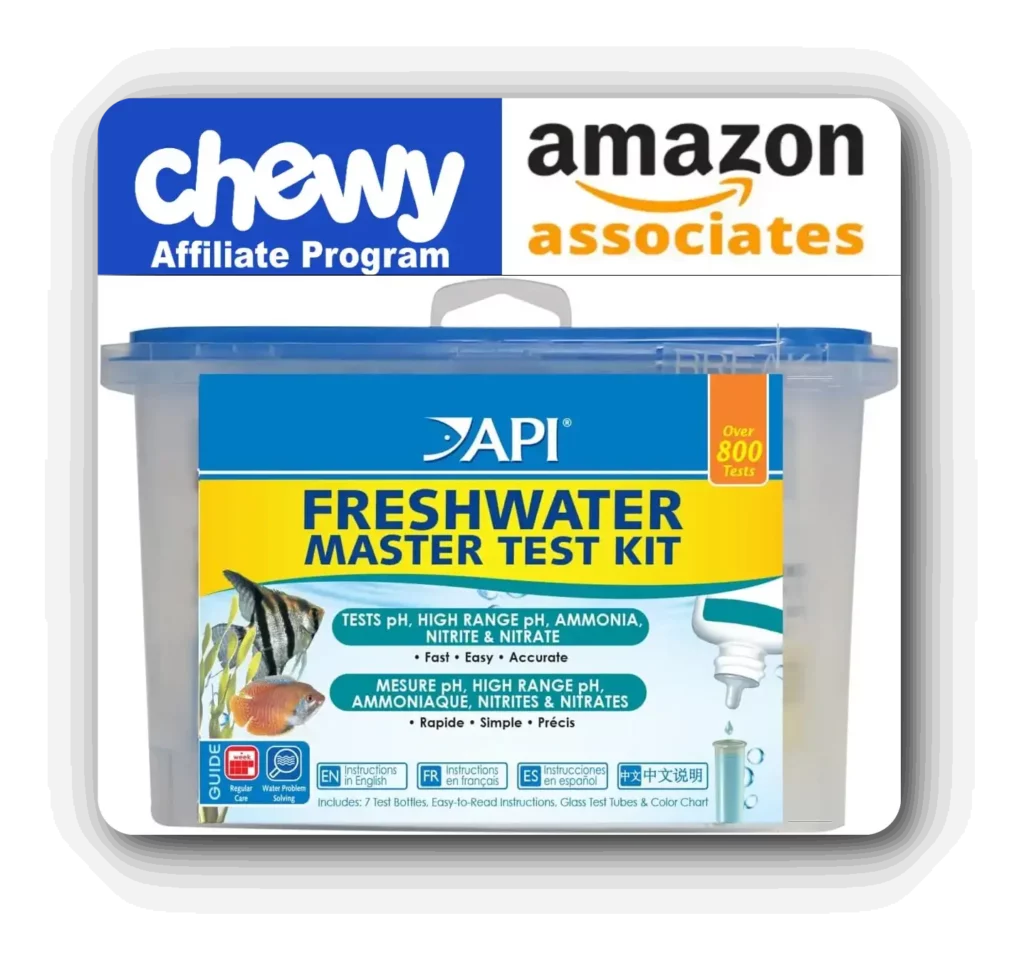
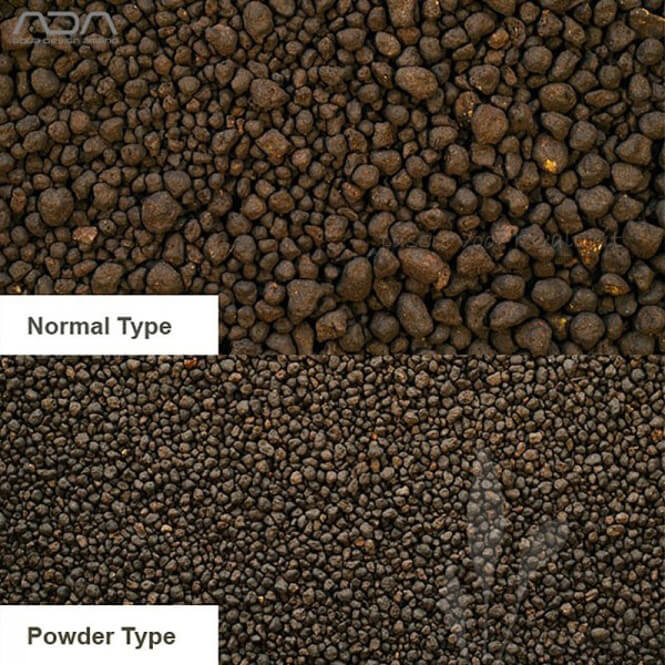



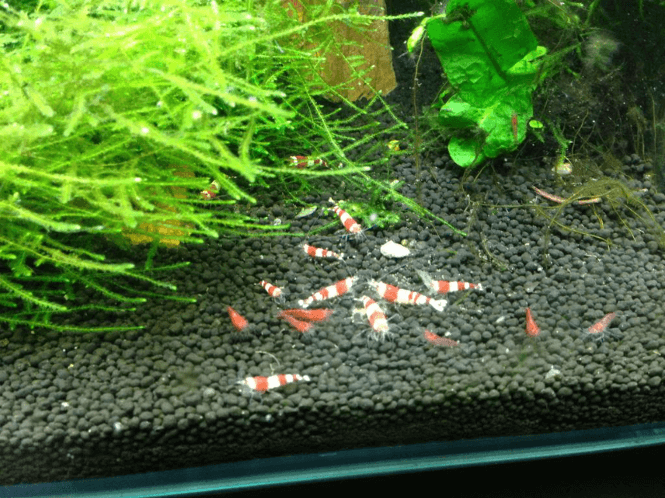
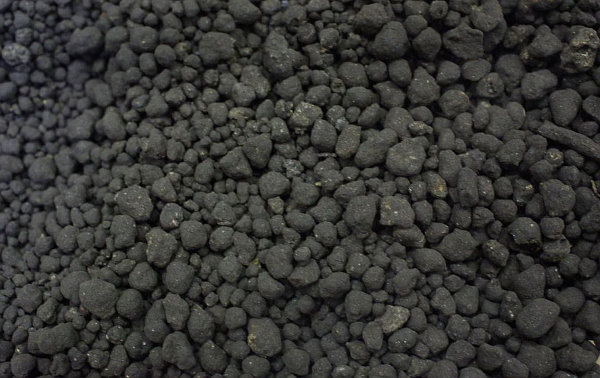
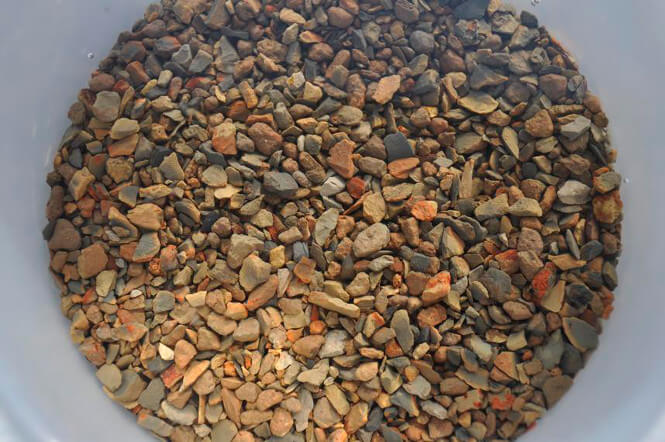
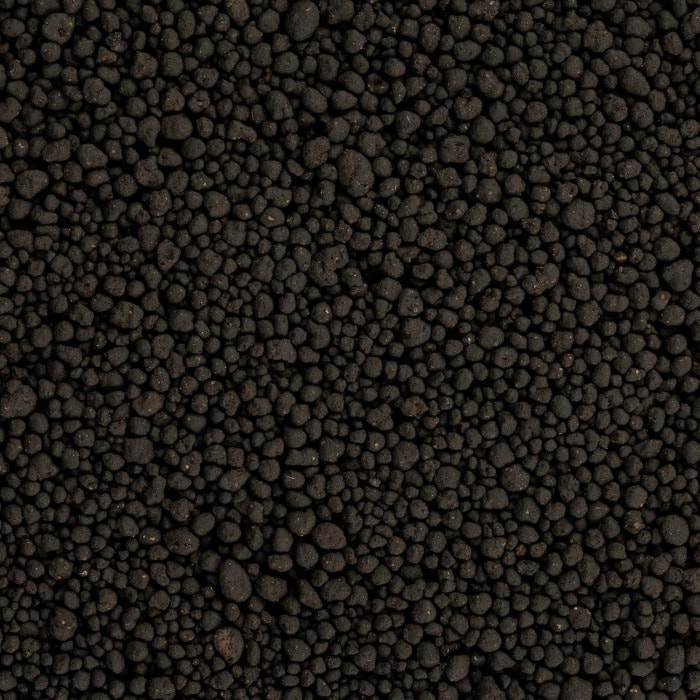


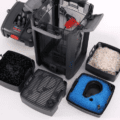


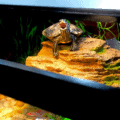
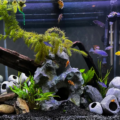
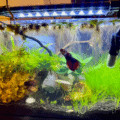
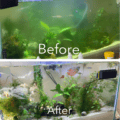

52 thoughts on “9 Best Planted Tank Substrates (Aqua Soil or Inert)”